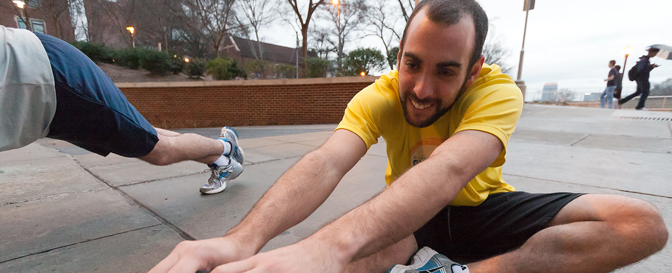“Here’s how you run a marathon; Step one: start running. There is no step two.”
If you ask Barney Stinson (played by Neil Patrick Harris on CBS’s sitcom “How I Met Your Mother”) how one would prepare to run a marathon, he once would have responded with the quoted opinion, illustrating a common misconception regarding the ease of marathon running. As he later learns when his legs “stop working” after he ran a 26-mile marathon without proper training, there are actually several steps involved in successfully preparing to participate in a marathon.
First and foremost, you need the right mentality. Marathon training requires a dedication of time, motivation, focus, willpower, and determination. Without first searching within yourself for the reasons you are running a marathon and identifying goals to measure your progress, sustaining the right mind set throughout weeks or months of preparation will prove difficult.
Second, choosing proper running gear. Treat your feet to a good pair of running shoes, as these will be the most important piece of gear. Shoes are designed to fit feet with different arches, pronation, and more. Visit a local specialty-running store (such as Phidippides Atlanta or West Stride Running Store) to find the best shoes for your feet. Comfortable and functional socks, training tops, shorts, and a water bottle are also worthy investments.
Third, achieve a base level of fitness via pre-training. During pre-training, which takes place before beginning marathon training, you should be able to run or perform an aerobic activity for at least 30-minutes at a time. The distance is not important, as the goal is to adjust your body to running for long distances.
Experts recommend combinations of running and walking during pre-training because they ease your body into the exercise and minimize the chance of experiencing an injury. Typically, pre-training should last from 6-10 weeks. Additionally, selecting a marathon to participate will assist in maintaining motivation when the real training begins.
Four, create a training plan.
Print off a 16 or 26-week training schedule outlining the number of miles to be ran each day and the days of rest and keep it where you can refer to it daily. Your mileage should gradually increase each week, with your longest run being 18-20 miles. You should then taper off (or reduce the amount of running) in the final weeks leading up to the marathon to allow your body to recover from training. Marathon runners indicate that having already accomplished a 20-mile run before the marathon itself will provide a major psychological advantage on marathon day, so scheduling to accommodate a distance, time, or other goal that brings you personal satisfaction is a great idea.
Five, get ready for the experience of Marathon Day.
It is essential to be tapering in the final weeks before the marathon, as it will help your body recover from marathon training and retain strength for the big day. You will also want to load your diet with carbohydrates in the week leading up to the race. Given the atmosphere at most marathons, you will likely feel full of adrenaline after leaving the starting line. Remember though, marathons are about endurance and pace is critical. Maintain pace to conserve energy and maintain stamina to reach your big finish!
